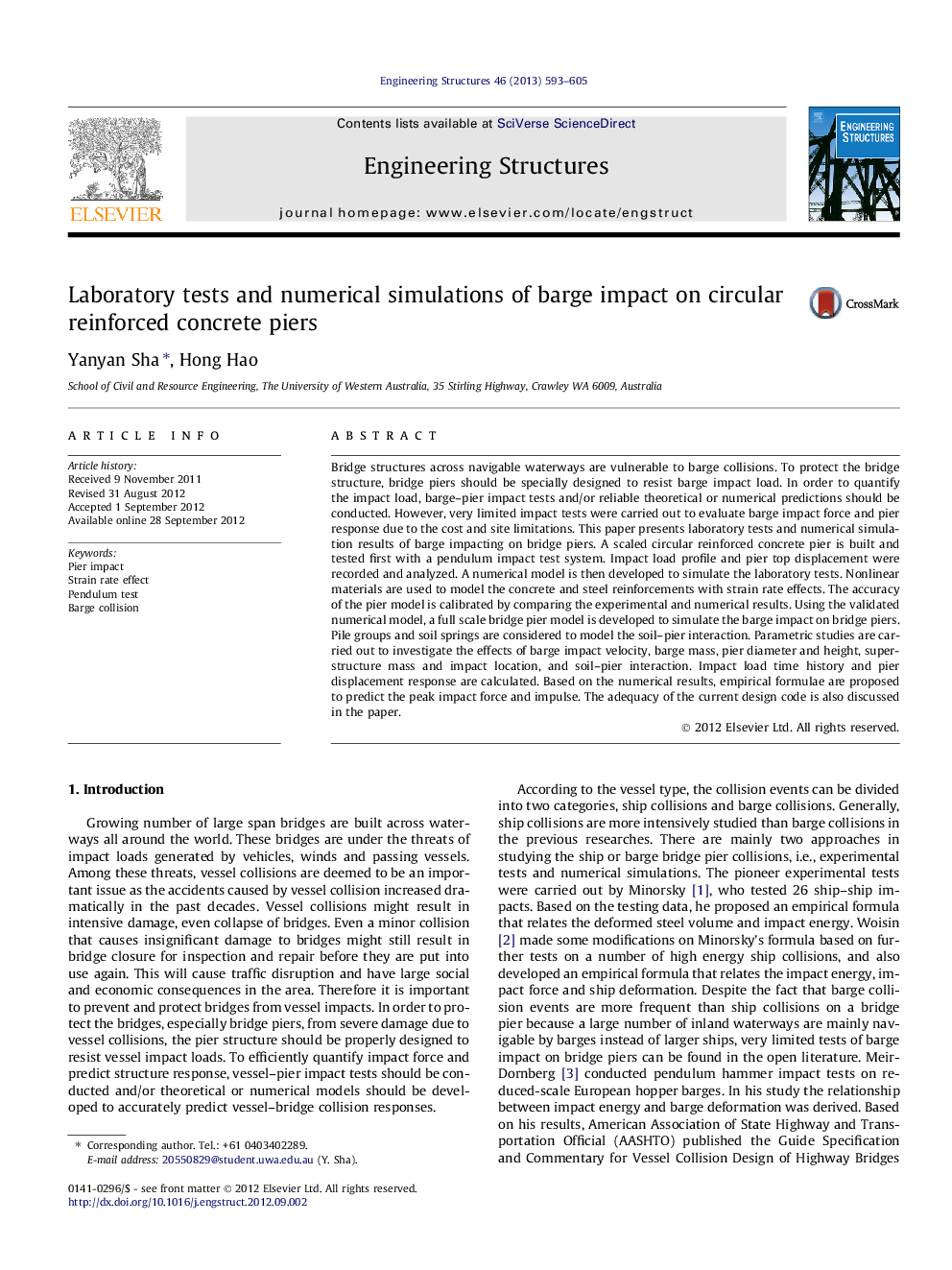| Article ID | Journal | Published Year | Pages | File Type |
|---|---|---|---|---|
| 267353 | Engineering Structures | 2013 | 13 Pages |
Bridge structures across navigable waterways are vulnerable to barge collisions. To protect the bridge structure, bridge piers should be specially designed to resist barge impact load. In order to quantify the impact load, barge–pier impact tests and/or reliable theoretical or numerical predictions should be conducted. However, very limited impact tests were carried out to evaluate barge impact force and pier response due to the cost and site limitations. This paper presents laboratory tests and numerical simulation results of barge impacting on bridge piers. A scaled circular reinforced concrete pier is built and tested first with a pendulum impact test system. Impact load profile and pier top displacement were recorded and analyzed. A numerical model is then developed to simulate the laboratory tests. Nonlinear materials are used to model the concrete and steel reinforcements with strain rate effects. The accuracy of the pier model is calibrated by comparing the experimental and numerical results. Using the validated numerical model, a full scale bridge pier model is developed to simulate the barge impact on bridge piers. Pile groups and soil springs are considered to model the soil–pier interaction. Parametric studies are carried out to investigate the effects of barge impact velocity, barge mass, pier diameter and height, superstructure mass and impact location, and soil–pier interaction. Impact load time history and pier displacement response are calculated. Based on the numerical results, empirical formulae are proposed to predict the peak impact force and impulse. The adequacy of the current design code is also discussed in the paper.
► We developed and validated a high-resolution FE model of a nonlinear bridge pier. ► We studied the influence of soil–pile-foundation effect on the impact force. ► Barge impact energy and pier geometry have significant effects on the impact force. ► The AASHTO provision tends to underestimate impact force when crush depth is small. ► Empirical equations are proposed for fast prediction of impact force time history.
